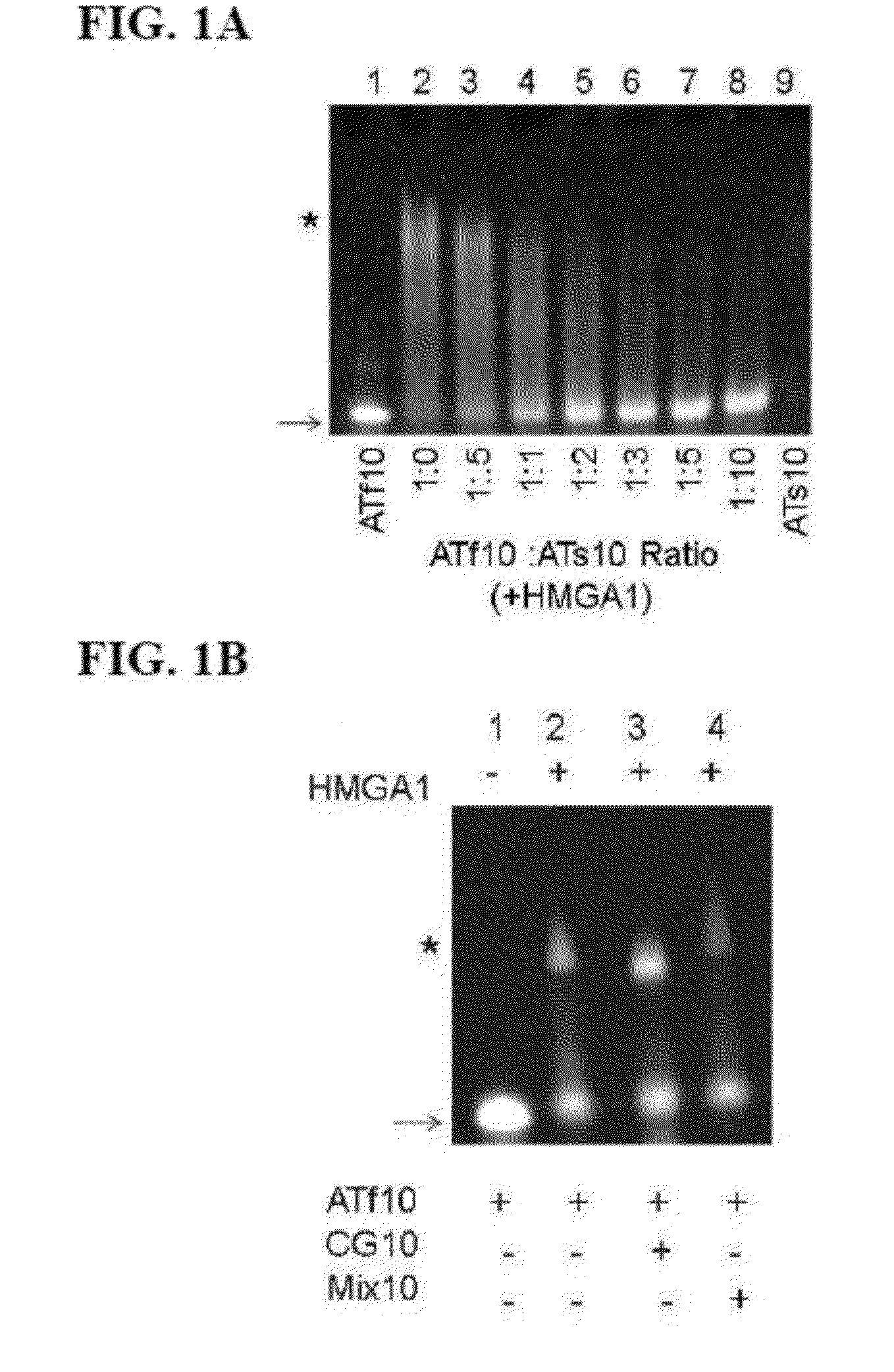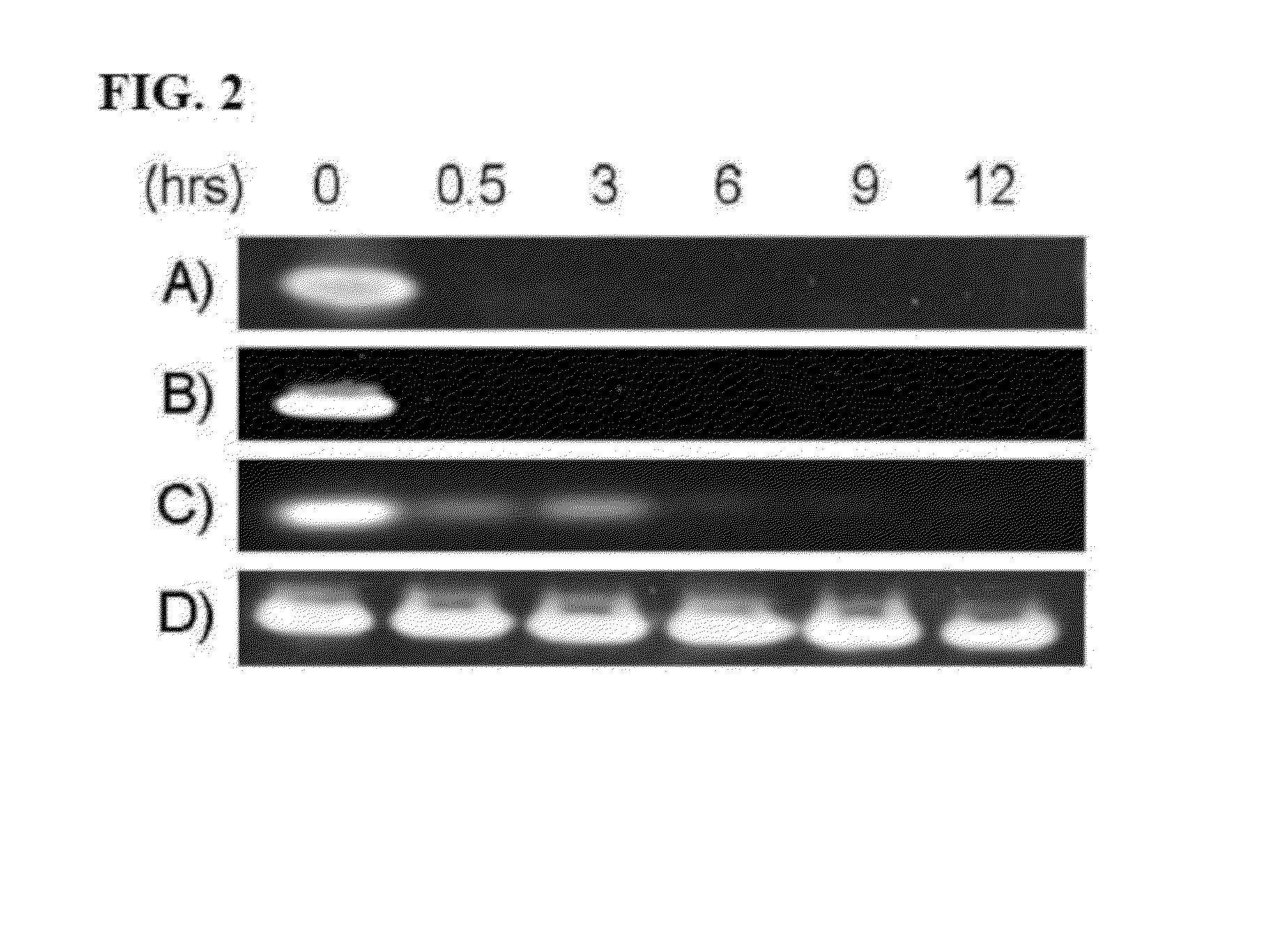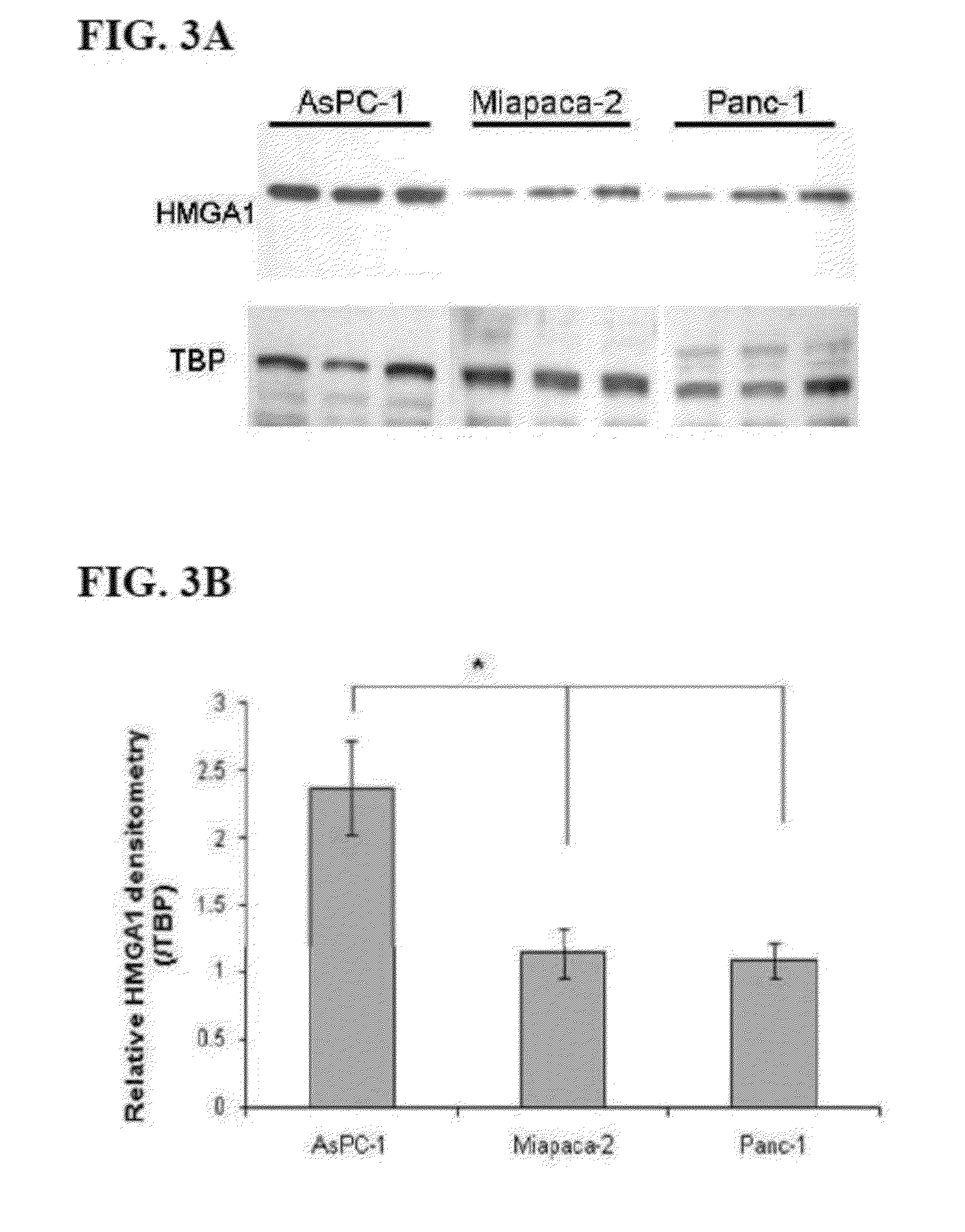Use of HGMA-targeted phosphorothioate DNA aptamers to suppress carcinogenic activity and increase sensitivity to chemotherapy agents in human cancer cells
a technology of phosphorothioate and aptamer, which is applied in the direction of biochemistry, sugar derivatives, organic chemistry, etc., can solve the problems of high toxicity of drugs in humans, and achieve the reduction of the number of pancreatic adenocarcinoma cells in the patient, the activity of high mobility group a (hmga) proteins in the human cancer cells, and the suppression of the activity of high mobility group a (hmga
- Summary
- Abstract
- Description
- Claims
- Application Information
AI Technical Summary
Benefits of technology
Problems solved by technology
Method used
Image
Examples
example 1
DNA Binding Assays
[0064]In order to determine if HMGA1 DNA binding activity was affected by sulfur substitution in the DNA phosphodiester backbone, fluorescence labeled DNA (ATf10 DNA) was used in competitive binding assays against various sulfur substituted DNAs where different ratios of ATf10 DNA and ATs10 DNA were added to a constant amount of purified HMGA1 (FIG. 1A).
[0065]FIG. 1A shows an image from an electrophoretic mobility shift assay (EMSA) of an HMGA1 competitive binding assay using sDNA and unmodified DNA. Lanes 1 and 9 are controls, ATf10 and ATs10 respectively, that do not contain HMGA1. The ratios between HMGA1 and ATf10 were kept constant at 1.5 (excess HMGA1, lane 2) and an increased amount of ATs10 was added to the reactions in lanes 3 to 8.
[0066]The amount of free (unshifted) ATf10 DNA was determined by monitoring the absorbance intensity at 495 nm using a BIO-RAD VersaDoc Imaging System Model 3000 (Bio-Rad, Hercules, Calif.) A constant ratio of ATf10 DNA to HMGA1...
example 2
Nuclease Resistance Assays
[0071]In order to have any potential clinical value, DNA-based aptamers targeting HMGA1 must have a long half-life against endogenous nuclease activity. To explore how nuclease resistance was affected by sulfur substitution in the HMGA1 DNA aptamers, sDNAs containing different numbers and positions of sulfur substitutions were subjected to nuclease resistance assays. FIG. 2 shows an image from the nuclease resistance assay for sDNA with DNase I. 0.25 nmol of: A) AT15; B) As10Ts10; C) As10Ts20; and D) As20Ts20 were incubated for 0 to 12 hours and run on a 7% native polyacrylamide gel. The gel was stained with ethidium bromide and visualized using an AlphaImager.
[0072]The sDNA stability and nuclease activity was confirmed prior to experiments by polyacrylamide gel electrophoresis of the sDNA and enzymatic assays confirming the activity of the nuclease. No DNA was detected after 30 minutes incubation when DNA with no sulfur substitutions or with sulfur substit...
example 3
HMGA1 Expression Levels in Pancreatic Cancer Cell Lines
[0073]HMGA1 expression in three human pancreatic cancer cell lines, AsPC-1, Miapaca-2 and Panc-1, was examined by Western blot analysis. The results of a western blot analysis of A) HMGA1 and B) HMGA2 expression levels in pancreatic cancer cell lines are shown on FIGS. 3A-B and 4A-B, respectively. In the assays shown in FIGS. 3A-B and 4A-B, nuclear extracts of AsPC-1, Miapaca-2, and Panc-1 cell lines were run on a 4-12% gradient gel. In each lane, 25 μg of total nuclear protein was loaded.
[0074]FIGS. 5A-B reflects the results of the western blot analysis measuring HMGA1 expression levels after transfection with CG-sDNA or AT-sDNA and in the presence of gemcitabine. 15 μg of total nuclear protein was loaded in each lane after AsPC-1 cells treated with 100 nM gemcitabine for 48 hours and transfected with 0.5 μg of CG-sDNA, or AT-sDNA in six well plates for 48 hours. The control was nuclear extract from untreated cells.
[0075]Tripli...
PUM
| Property | Measurement | Unit |
|---|---|---|
| pH | aaaaa | aaaaa |
| length | aaaaa | aaaaa |
| chemotherapy resistance | aaaaa | aaaaa |
Abstract
Description
Claims
Application Information
 Login to View More
Login to View More - R&D
- Intellectual Property
- Life Sciences
- Materials
- Tech Scout
- Unparalleled Data Quality
- Higher Quality Content
- 60% Fewer Hallucinations
Browse by: Latest US Patents, China's latest patents, Technical Efficacy Thesaurus, Application Domain, Technology Topic, Popular Technical Reports.
© 2025 PatSnap. All rights reserved.Legal|Privacy policy|Modern Slavery Act Transparency Statement|Sitemap|About US| Contact US: help@patsnap.com



